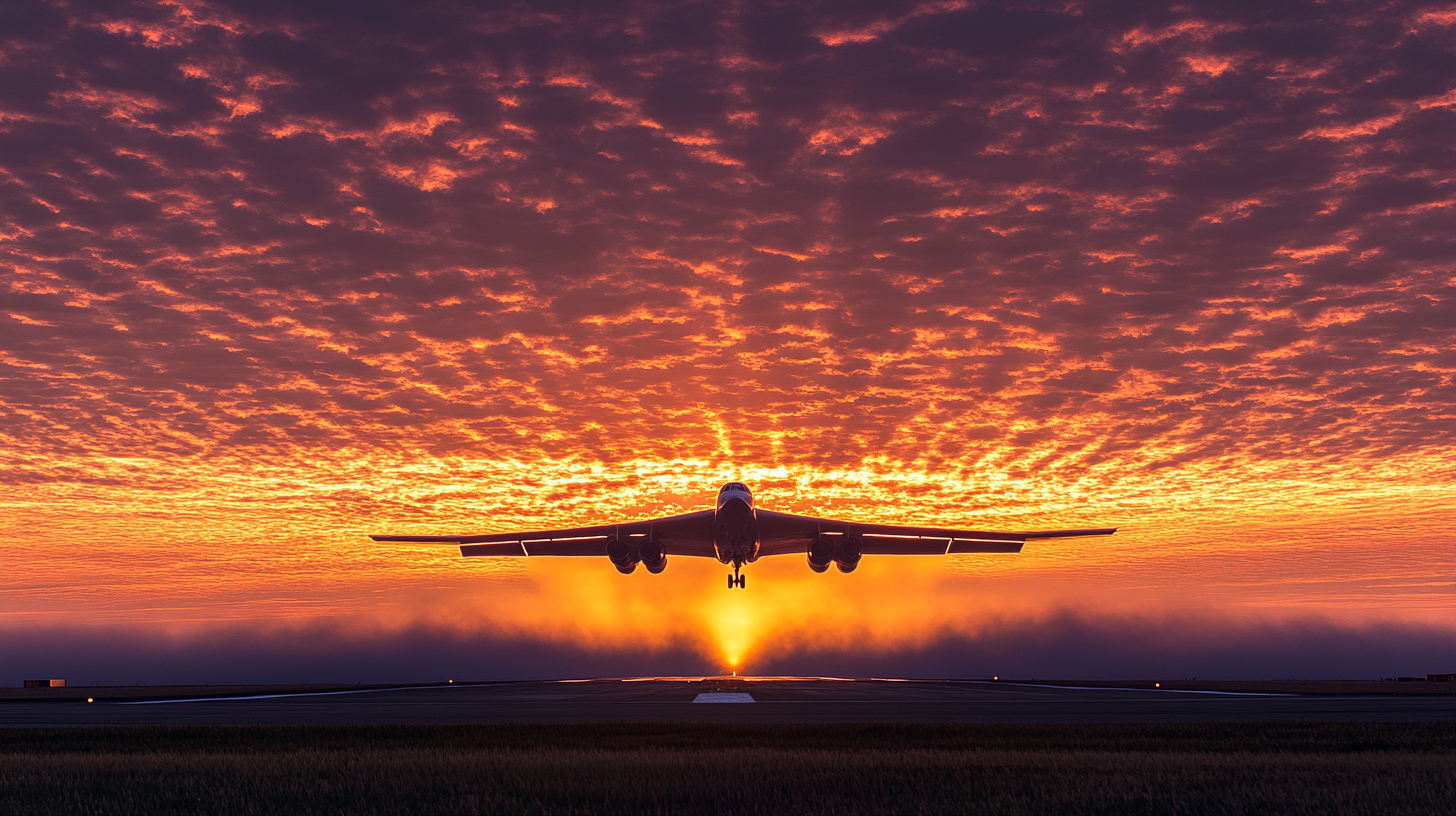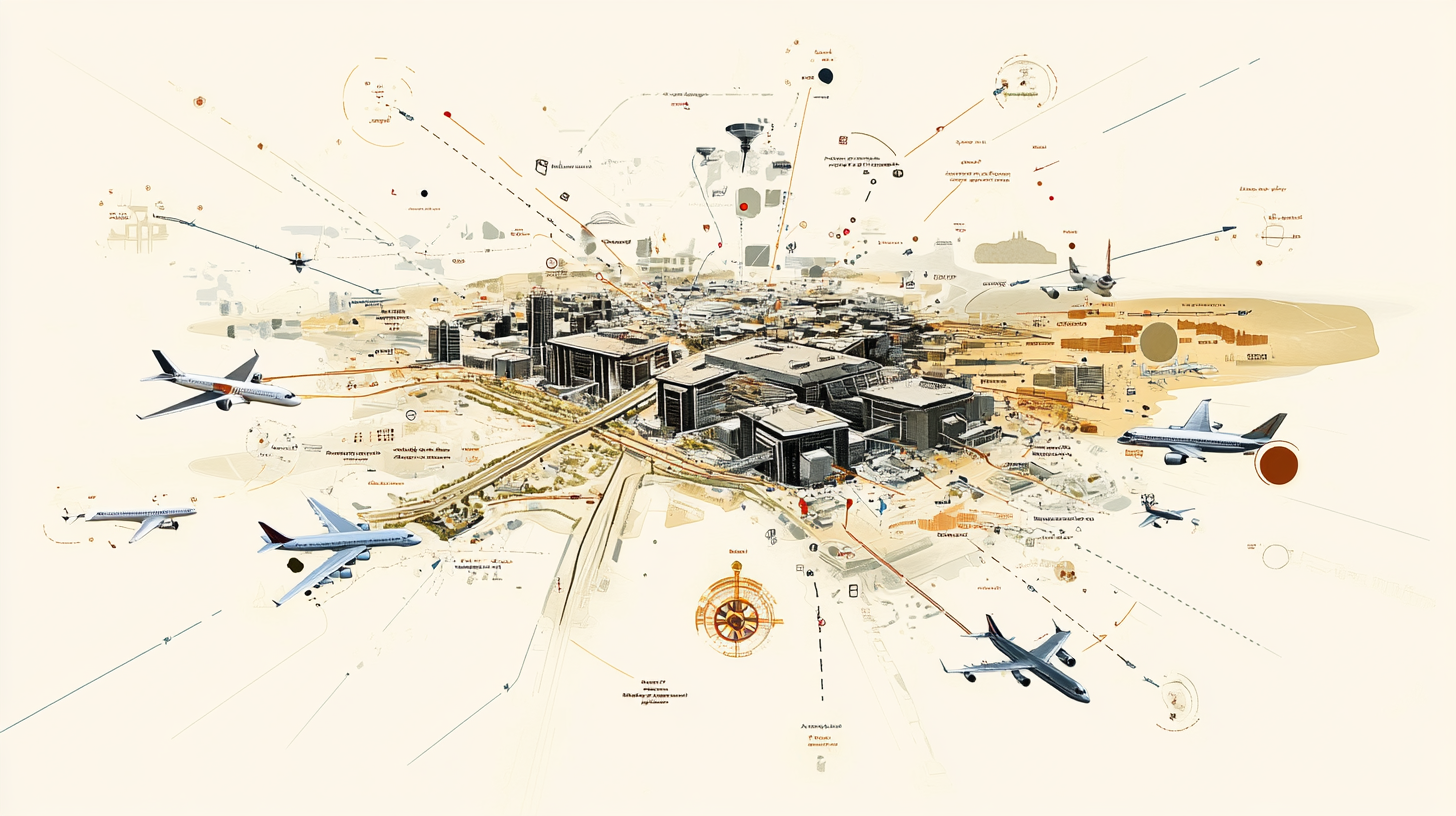7 Travel Hacks to Reduce Holiday Flight Delays and Stress

The holiday season is upon us, bringing with it the joy of festive gatherings and the anticipation of reuniting with loved ones. Yet, amidst the excitement, many travelers face the annual challenge of navigating crowded airports, enduring long security lines, and the looming threat of flight delays as reported by FlightAware. The hectic nature of holiday travel can turn a joyous occasion into a stressful ordeal. But fear not! With careful planning and smart strategies, you can sidestep common pitfalls and make your journey as smooth as possible. Below are seven indispensable travel hacks designed to help you reduce flight delays and alleviate stress during this holiday season.
1. Book Early Morning Flights

One of the most effective strategies to minimize the risk of flight delays is to book flights that depart early in the morning. According to NerdWallet, flights scheduled for departure between 5 a.m. and 8 a.m. are statistically less likely to be delayed compared to those later in the day. This is because early morning flights are the first to depart, and there hasn’t been enough time for delays to accumulate or cascade from other airports. Learn more about how flights can be affected by cascading delays from One Mile at a Time.
Airlines often position their aircraft at the departure airport overnight, ensuring that the plane is ready and available for the first flights of the day. This practice reduces the dependency on incoming aircraft arrivals, which can be delayed due to various factors such as weather or air traffic congestion. Discover the impact of air traffic control delays courtesy of the FAA.
Moreover, weather conditions are typically more favorable in the early hours. Cooler morning temperatures contribute to calmer atmospheric conditions, decreasing the likelihood of weather-related disruptions. Visit CNN’s report on the weather impact on flights to learn more. Thunderstorms and other severe weather phenomena are more common in the afternoon, increasing the risk of delays and cancellations as the day progresses.
Another significant advantage of flying early is that airports are generally less crowded, leading to shorter security lines and quicker check-in processes. View Statista’s chart on airport crowd levels for more details. This can significantly reduce stress levels and the time spent waiting in lines. The quieter atmosphere allows you to navigate the airport more efficiently, potentially even enjoying a leisurely coffee before boarding. Explore airport amenities at The Air Traveler.
While setting an early alarm might seem daunting, the benefits of morning flights are well worth the effort. Not only do you reduce the risk of delays, but you also arrive at your destination earlier, granting you extra time to settle in, adjust to any time difference, and start enjoying your holiday. For tips on managing jet lag, read more at Healthline. Consider packing a travel pillow and eye mask to catch some rest on the flight, ensuring you’re refreshed upon arrival with recommendations from U.S. News.
2. Use Airline Apps for Real-Time Updates

In the fast-paced environment of airport terminals, staying informed is essential. Airline mobile apps are invaluable tools that provide real-time updates on your flight status, gate assignments, boarding times, and any schedule changes. By downloading your airline’s app, you ensure that important notifications are sent directly to your smartphone.
These apps often feature mobile boarding passes with American Airlines, allowing you to bypass the ticket counter and head straight to security. This not only saves time but also reduces the risk of losing paper documents amidst the flurry of travel. Many apps also enable seat selection and upgrades, giving you greater control over your in-flight experience.
Some airline apps offer additional functionalities such as tracking checked baggage, accessing in-flight entertainment options, and even ordering food and beverages ahead of time. Discover more about tracking technology from Travel + Leisure. By familiarizing yourself with these features, you can enhance convenience and reduce uncertainties that often contribute to travel stress.
Ensure your smartphone is fully charged before heading to the airport, and consider carrying a portable charger. Check out PCMag’s guide to portable power banks to maintain connectivity throughout your journey. With real-time information at your fingertips, you can adapt quickly to any changes and make informed decisions on the go.
3. Opt for Direct Flights

Whenever feasible, booking direct or nonstop flights can significantly reduce the chances of experiencing delays and the stress associated with tight connections. Layovers inherently introduce additional variables into your travel itinerary, such as the possibility of the first flight arriving late, causing you to miss your connecting flight. For more on this subject, visit One Mile at a Time.
While direct flights may sometimes come with a higher price tag, consider the value of your time and peace of mind. Weigh the cost against potential expenses incurred from missed connections, such as accommodation, meals, and lost time. Conduct a cost-benefit analysis at Asana to evaluate your choices. Moreover, flying direct reduces the total travel time, getting you to your destination faster and with fewer complications.
If a direct flight isn’t available or practical, aim to schedule ample layover time between connecting flights. Airlines often suggest a minimum connection time, but during the busy holiday season, it’s wise to allow for extra time. Learn about minimum connection times with OAG. Consider at least 90 minutes for domestic connections and up to three hours for international ones, especially in large or unfamiliar airports.
Additionally, familiarize yourself with the layout of the connecting airport and consider using tools like GateGuru or airport apps to assist in quick navigation. Visit The Air Traveler for airport maps. Planning ahead can save you from the frustration and anxiety of rushing through terminals or missing your flight altogether.
4. Pack Light and Smart

Traveling with minimal luggage not only simplifies your journey but also mitigates the risk of lost or delayed baggage. According to The Points Guy, airlines handle a significantly increased volume of checked bags during the holiday season, elevating the chances of mishandling or misplacing luggage.
Strategic packing involves selecting versatile clothing items that can be mixed and matched, allowing for various outfits with fewer pieces. Opt for lightweight, wrinkle-resistant fabrics available at TravelSmith. Consider the use of packing cubes to organize and compress your items efficiently. Rolling your clothes instead of folding can maximize space and reduce creasing.
Be mindful of airline regulations regarding carry-on sizes and weight limits, as detailed by U.S. News, which can vary between carriers. Investing in a quality carry-on suitcase that complies with most airlines’ requirements is advisable.
In addition to your carry-on, pack a small personal item, such as a backpack or tote bag. SmarterTravel provides insight into personal item allowances. Include essential toiletries (compliant with the TSA’s 3-1-1 liquids rule) and any medications you may need. Don’t forget to include important documents, electronics, and valuables in your personal item to keep them accessible and secure.
Traveling light enhances your mobility within the airport, making it easier to navigate security checkpoints and move between gates swiftly. It also saves time upon arrival, as you can bypass baggage claim and head straight to your destination. This agility can be crucial when dealing with tight connections or unexpected gate changes. For further advice, visit Simple Flying for navigation tips.
5. Enroll in TSA PreCheck or Global Entry

Lengthy security lines are a notorious stressor during peak travel times like the holidays. Enrolling in trusted traveler programs such as TSA PreCheck or Global Entry can significantly expedite your airport experience. These programs are designed to enhance security while streamlining the screening process for low-risk travelers.
TSA PreCheck is ideal for domestic travelers, allowing you to access dedicated security lanes that are typically shorter and move faster than standard lines. Benefits include not having to remove your shoes, belts, or light jackets, and leaving laptops and approved liquids in your carry-on bag. Learn more about TSA PreCheck benefits on the TSA website. This can save valuable time, especially in busy airports.
Global Entry encompasses all the benefits of TSA PreCheck but is geared towards international travelers. It provides expedited customs screening upon re-entry to the United States via automated kiosks. Find more at U.S. Customs and Border Protection’s website. For frequent international flyers, Global Entry is a worthwhile investment, offering a seamless transition through customs and security checkpoints.
The application process for both programs involves an online application, a background check, and an in-person interview at an enrollment center. Check available locations via the TSA’s official resources. While there is a fee—$85 for TSA PreCheck and $100 for Global Entry—the memberships are valid for five years. Some credit cards offer reimbursement for these fees as a travel perk benefit – analyze your options on Asana.
Apply well in advance of your trip, as processing times can vary and interviews may need to be scheduled weeks ahead. Once approved, remember to include your Known Traveler Number (KTN usage details) when booking flights to ensure your boarding pass reflects your expedited status. The time saved and reduced stress levels at the airport can greatly enhance your overall travel experience.
6. Stay Informed About Weather Conditions

Weather-related delays are a common issue during the holiday travel season, especially in regions prone to snowstorms, fog, or other severe weather conditions. Refer to Fox Weather for holiday travel weather updates. Staying informed about the forecast for both your departure and arrival cities—as well as any layover locations—is crucial in anticipating potential disruptions.
Utilize reliable weather apps like AccuWeather or The Weather Channel, and set up alerts for any severe conditions that may affect your travel plans. Pay attention to national weather advisories and airport-specific notifications from airlines. This proactive approach allows you to make informed decisions, such as adjusting your itinerary or preparing for possible delays.
In cases where inclement weather is forecasted, check with your airline regarding their travel waiver policies. Delta, for example, offers travel waivers when significant weather events are anticipated. Taking advantage of these policies early can help you reschedule your flight to a safer and more convenient time.
If you must travel during adverse weather conditions, prepare accordingly by packing extra essentials in your carry-on, such as snacks, medications, and portable chargers. View a comprehensive travel essentials checklist at SmarterTravel. Consider booking flights a day earlier to provide a buffer in case of cancellations or delays. Learn about contingency planning for travel at StressFreeTravelInc. Additionally, stay in close communication with your airline and monitor flight status updates regularly.
Remember, safety is the top priority for airlines when severe weather strikes. While delays and cancellations can be frustrating, understanding the reasons behind them and having a flexible mindset can help reduce stress. For tips, read more on coping with travel stress at Cleveland Clinic. Always prioritize your well-being and that of other travelers during these situations.
7. Consider Alternative Airports

Major hub airports like JFK, LAX, or O’Hare are often crowded and chaotic during the holidays, increasing the potential for delays. For detailed insights into hub airports, read Airfarewatchdog’s guide. Exploring flights from smaller, regional airports can provide a more relaxed and efficient travel experience. These airports typically have fewer flights, leading to shorter security lines, less congested terminals, and a lower chance of delays due to air traffic.
Alternative airports may offer competitive pricing and convenient flight times, especially if you’re flexible with your travel schedule. Visit Frontier Airlines for flight flexibility suggestions. For example, instead of flying into San Francisco International Airport (SFO), consider Oakland International Airport (OAK) or San Jose International Airport (SJC). Similarly, if you’re traveling to Washington D.C., look into flights arriving at Baltimore/Washington International Thurgood Marshall Airport (BWI) or Ronald Reagan Washington National Airport (DCA) instead of Dulles International Airport (IAD).
When considering alternative airports, factor in the transportation options to and from the airport. Compare costs for ground transportation such as rental cars, shuttles, or public transit through Yelp’s transit listings to ensure the overall value. In some cases, these airports are closer to your final destination, potentially saving you time and money on ground travel.
In addition, these smaller airports may offer amenities that enhance your travel experience, such as less busy lounges detailed by Priority Pass, local dining options, and faster baggage claim services. The calmer environment can make a significant difference in reducing travel stress and starting your holiday on a positive note. For dining tips, see Roam and Thrive’s guide on airport dining.
Researching and choosing the right airport requires a bit more effort but can pay off in a smoother, more enjoyable journey. Leverage online tools and flight comparison websites, such as Kayak’s airport selection guide and visit BoardingArea for additional options.
Final Thoughts

Holiday travel doesn’t have to be synonymous with stress and delays. By implementing these seven strategic travel hacks, you can navigate the busiest travel season with confidence and ease. From choosing early morning flights to leveraging technology and thoughtful planning, each tip is designed to enhance your travel experience and ensure you arrive at your destination ready to celebrate. Visit StressFreeTravelInc for more stress-free travel insights.
Remember, preparation is the key to a successful journey. The more you plan ahead and utilize the resources available, the smoother your travel will be. Embrace these strategies, stay flexible, and maintain a positive attitude with tips from Roam and Thrive, and you’ll be well on your way to enjoying a more relaxed and timely arrival at your holiday destination.
For more travel tips, expert advice, and the latest industry news, visit us at BoardingArea. We wish you safe travels and a joyous holiday season!





























